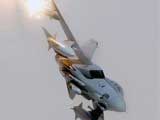The Alliance on its Road from Warsaw to Brussels
12 Sep 2016
By Dominik Jankowski for European Geostrategy
This article was external pageoriginally publishedcall_made by external pageEuropean Geostrategycall_made on 1 September 2016.
The NATO Summit in Warsaw was a watershed moment for the Alliance. It rightly assessed the threat from a resurgent Russia and offered numerous concrete decisions to strengthen the eastern flank of the Alliance. Indeed, it was NATO that brought the phrase ‘enhanced forward presence’ into common currency. Moreover, it has been clear from the beginning of the Russian-Ukrainian conflict that turning NATO into an instrument of détente might reduce its security contribution without achieving a relaxation of tensions. Therefore, the Allies also struck at the Summit the right balance between the decisions on deterrence and defence posture as well as a meaningful dialogue with Russia.
Yet, deeds, not words, are what really count. In practical terms it means that the Alliance should embark immediately on a road to implement the Summit decisions. And this is, in fact, happening. However, ‘deeds, not words’ also implies that Russia will show its political goodwill and engage in a meaningful dialogue with NATO on the Russian-Ukrainian conflict as well as to avoid misunderstanding, miscalculation and to increase transparency and predictability. Yet, since the NATO Summit in Warsaw one could observe a stark contrast between the Russian words and actions. The worrisome indicators encompass a recent alleged Ukrainian terrorist plot in Crimea, new military deployments to the peninsula (e.g. advanced S-400 air defence missile system), unprecedented numbers of the ceasefire violations, increasing threat in the work of the OSCE monitors, downing of the OSCE UAVs both by small arms and sophisticated Russian jamming equipment as well as numerous negative comments on the need for the Normandy format meetings. Furthermore, the Russian military exercises – including snap ones – on land (Transnistria, Belarus, Crimea, the Russian Western Military District) and at sea (the Baltic Sea, the Black Sea, the Caspian Sea) carry additional risks. In fact, the ‘Caucasus 2016’ drills which will take place in the Russian Southern Military District (including Crimea) in a few days (5-10 September) are being weaponised to keep the West and Ukraine off balance. All this may signal the Russian readiness to further escalate the situation in the vicinity of the Alliance.
The Alliance on its road from the Summit in Warsaw to the Summit in Brussels in 2017 should embrace five strategic issues, necessary to strengthen the process of NATO’s long-term strategic adaptation.
First, NATO should become a key platform for a new transatlantic grand bargain. The ongoing presidential campaign in the U.S. has once again revealed a growing criticisms of NATO among some American political circles, and in the camp of Donald Trump writ large. A new transatlantic bargain should lead to a more fair and balanced burden-sharing, both in terms of devoting necessary financial resources as well as investing in the right capabilities. Following the decisions of the Summit in Warsaw, the Alliance will in fact need additional heavier high-end capabilities. A NATO Defence Planning Pledge – which would not replace the NATO Defence Investment Pledge, but would concentrate more on a desired military output – could become a starting point for a renewed transatlantic bond.
Second, NATO needs a clear politico-military strategy to counter the Russian ‘Anti-Access/Area Denial’ (A2/AD) systems. Even if A2/AD is by no means a new concept it poses a great challenge to political and military credibility of NATO as is prevents freedom of manoeuver. Therefore, it should be considered as an aggressive posture. In fact, Russia has harnessed an array of stand-off weapons – including air defence, coastal defence, cruise missiles, tactical ballistic missile platforms, naval and submarine forces as well as electronic and cyber warfare – which can turn areas falling within their range into strategically and operationally isolated ‘bubbles’.
Third, in a A2/AD and hybrid environment the Alliance needs a renewed and more ambitious exercises policy. NATO drills should not only provide assurance to Allies, but also serve as an element of a deterrence policy. An updated approach to exercises should not only include high-end capabilities and large-scale formations, but be employed in a non-permissive environment. In short, what NATO needs are regular exercises of the Follow on Forces in A2/AD ‘bubbles’.
Fourth, NATO needs additional robust intelligence, surveillance, and reconnaissance (ISR) capabilities which are a fundamental requirement for effective situational awareness, strategic foresight and early warning. In response to the current threats and challenges, NATO should consider emplacing a Regional Intelligence Analysis Centre (RIAC) on its eastern flank which would supplement the work done by the NATO Intelligence Fusion Centre (NIFC). An additional ISR presence in the region, e.g. an AGS forward operating location in Poland, would also support the planning and execution of current and future activities on the eastern flank.
Fifth, the Alliance needs a reviewed NATO Command Structure (NCS) which should be better suited to deliver on the collective defence tasks. Reality has challenged some assumptions on which the NCS was based, e.g. its connectivity with the NATO Force Structure is not sufficient. Moreover, the Warsaw Summit decisions on strengthened deterrence and defence posture added new requirements for the existing NCS.
In the current and foreseeable security environment, NATO’s military adaption should be continued. The next months should be devoted not only to the implementation of the Warsaw Summit decisions. There is still much to ponder. By starting with those five strategic issues NATO will stay on the right path and draw credible ‘red lines’ that can keep Russian adventurism in check.
About the Author
Dominik P. Jankowski is head of the OSCE and Eastern Security Unit at the Ministry of Foreign Affairs of the Republic of Poland.
For more information on issues and events that shape our world, please visit the CSS Blog Network or browse our Digital Library.

